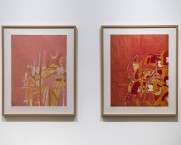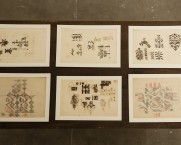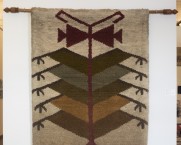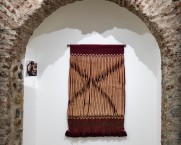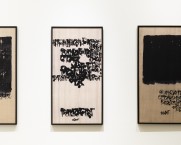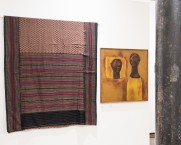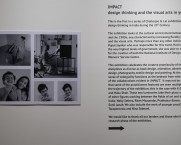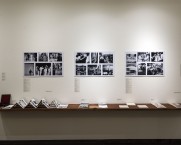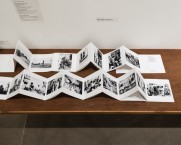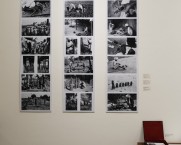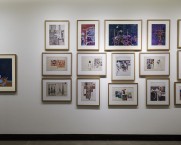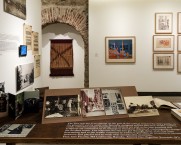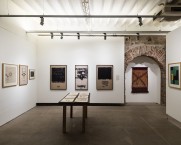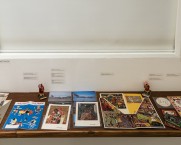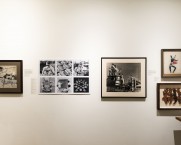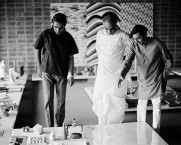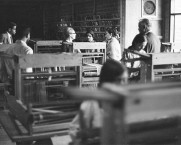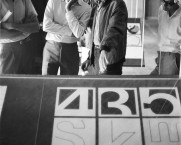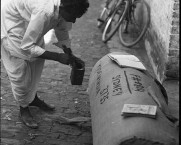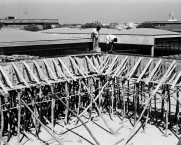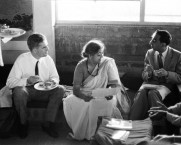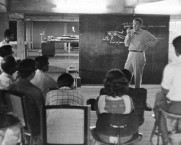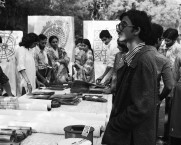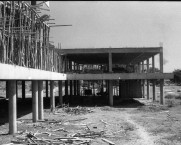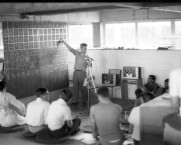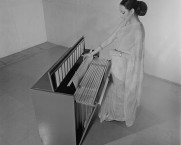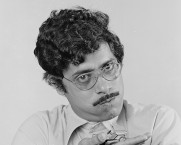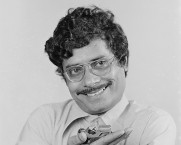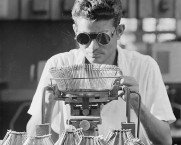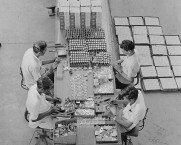C&L Shows
IMPACT: design thinking and the visual arts in young India
KG Subramanyan, Nelly Sethna, Riten Mozumdar
2018
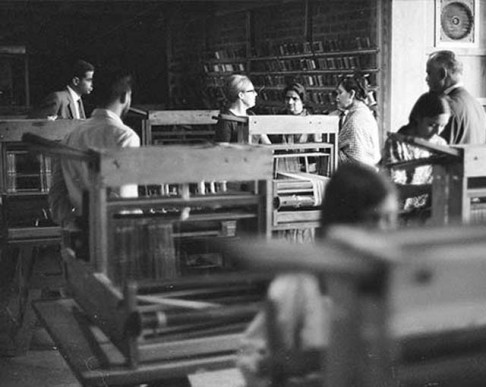
Overview
Visit of Admiral Nanda, 1972, Head, Hand & Heart – Helena Perheentupa, detail of photograph, courtesy: National Institute of Design Archives, Ahmedabad
IMPACT: design thinking and the visual arts in young India
This is the first in a series of Chatterjee & Lal exhibitions charting design thinking in India during the 20th Century. For IMPACT, the focus has been on the individuals, groups and institutions active soon after independence and working at the intersection between art and design.
The exhibition proposes a cultural environment – dating between the 1950s and the 1980s – which was characterised by increasing fluidity between the disciplines of design and the visual arts. Two key examples of this phenomenon are the National Institute of Design (NID), Ahmedabad, and the pan-India initiative of the Weavers’ Service Centre; in both cases, cross-disciplinary thinking was a key driver to the success of these institutions. Perhaps more than any other individual, it was Pupul Jayakar who was responsible for this.
Having influence at the very highest levels of government, Jayakar was able to obtain support for the creation of both NID and the Weavers’ Service Centre. Hers was an outlook that moved with ease from the international to the local, from the worlds of crafts practice to those of contemporary art and design. To help in the projects she helmed, Jayakar sought out the best practitioners and thinkers, whether based in India or anywhere else in the world.
The creative promiscuity that this exhibition celebrates incorporates disciplines as diverse as book design, animation, advertising, industrial design, photography, textiles and painting. At the same time, a sense of collegiality functions as the bedrock from which sprang many of the collaborations evident in IMPACT. Nowhere is this more in evidence than the section titled Souvenir Shop (from the exhibition ‘Hangar for the Passerby’, curated by Akansha Rastogi). First seen at the KNMA, Noida, in 2017, the Souvenir Shop creates a ‘meeting ground’ for a ‘criss-cross of institutional histories’, comprising both artworks and archival material from a host of artist collectives and organisations active in post-independence India. It seems most apt that this section has been made possible through a spirit of openness and exchange between a museum and a commercial gallery.
Some of the practitioners featured in IMPACT are seen multiple times through the trajectory of the exhibition, and, at each point, with very different kinds of work. In the case of K.G. Subramanyan (1924 – 2016), there is an exceedingly rare group of designs he made for the Weavers’ Service Centre (between 1959 – 1961/1962); a selection of his legendary 1960s ‘Markers’ series drawings and paintings; as well as his original designs for children’s books from the 1980s. As for Haku Shah (b. 1934), he has always possessed an extraordinarily wide range of creative interests, and the exhibition includes examples from his photographic documentation of crafts practice, as well objects from his experimentation with textile design, book design, and painting.
These two luminaries take their place in this exhibition alongside a host of other figures working between the fields of art and design in modern India: Nelly Sethna, Riten Mazumdar, Prabhakar Barwe, Mitter Bedi, and Sunil Janah. We also include the work of a younger practitioners who have sought out either inspiration or collaboration from their seniors: Sooni Taraporevala’s sensitive portrait of Nelly Sethna and Nina Sabnani’s charming animation, ‘Summer Story’, that takes inspiration from K.G. Subramanyan’s illustrations.
We would like to thank all our lenders and those who helped in the research phase of the exhibition.

